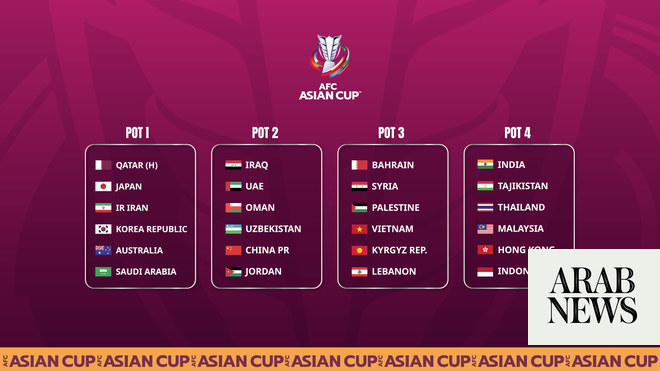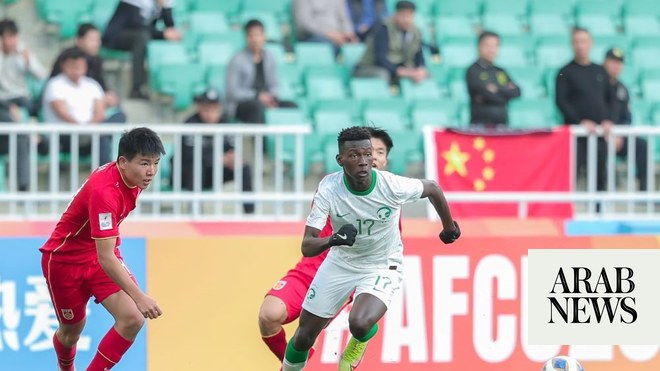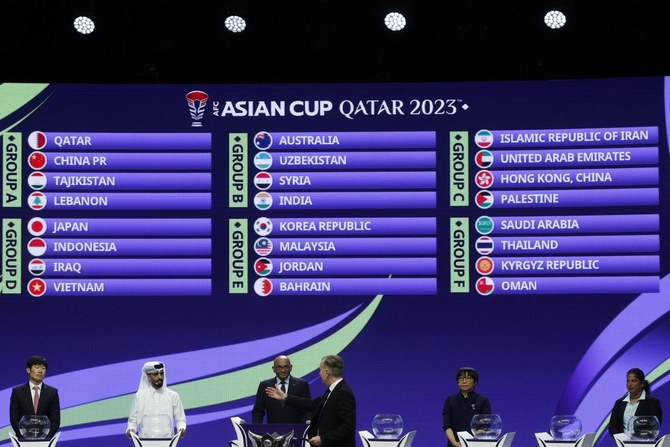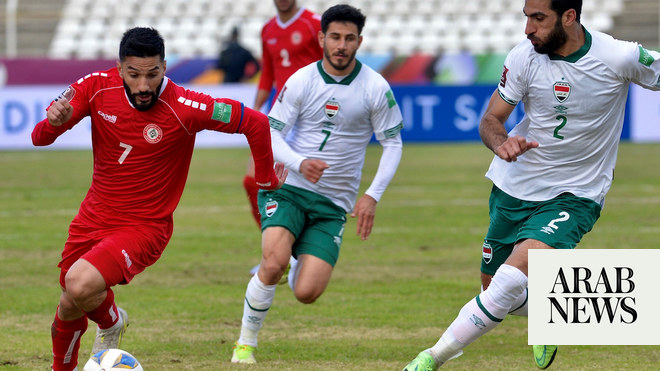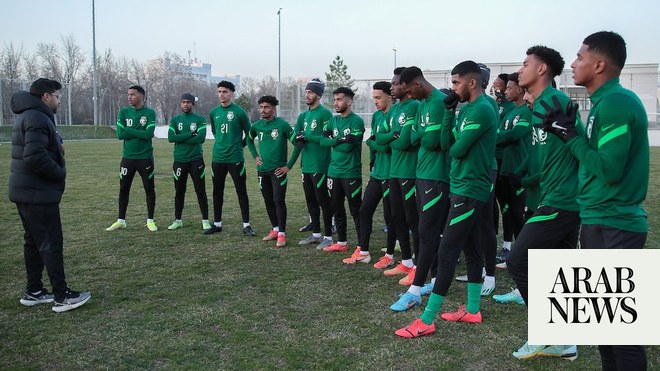
Saudi Arabia, Syria, UAE, Lebanon, Iraq, Qatar and Oman have already progressed through their World Cup qualification and could be joined by five more regional teams
There were an impressive 11 Arab nations at the 2019 Asian Cup. Saudi Arabia, Syria, UAE, Lebanon, Iraq, Qatar and Oman have already booked their places in the 2023 tournament thanks to their performances in qualifying for the 2022 World Cup.
Bahrain, Yemen, Palestine, Jordan and Kuwait found out on Thursday what they have to do in June to join them in China, and if all five make it then half of the 24 teams in the Asian Cup will be Arab. There is a lot to do, however, if that is to happen.
It works like this: there are 24 teams divided into six groups of four. Instead of the usual home and away format, each group will be played in a round-robin format of three games in a central venue. There are 11 slots available, meaning that the six group winners and the five best runners-up will qualify.
Group A is the only one to be based in West Asia with Kuwait taking on the hosting duties and welcoming Jordan, Indonesia and Nepal. The group is almost a reunion of the second round of qualification of the 2022 World Cup. Then, Australia won all their games, Kuwait and Jordan were second with 14 points each and Nepal came next with six. This time, the Blues and Jordan will be expected to do something similar and will be too strong for the South Asians, who are ranked 167 in the world.
Indonesia will present the toughest challenge. Its young team has been improving under Shin Tae-yong, who led South Korea at the 2018 World Cup and also coached Seongnam FC to the 2010 AFC Champions League title. The free-scoring Southeast Asians finished as runners-up in their regional tournament in December, and knocked out Vietnam in the semi final but couldn’t match Thailand in the final, losing 6-2 on aggregate. Indonesia’s chances against the defensively stronger Kuwait and Jordan in their backyard – both teams have also been playing plenty of friendly games – are poor. It will be a surprise if the two Arab teams from the group do not make it to China.
Group B looks to be the most interesting, with all four teams hoping to qualify. Both Yemen and Palestine made the 2019 competition and face a trip to Mongolia this June to try to repeat that success. Mongolia are very much the outsiders on paper, and will struggle to compete in Asia. They lack both professional clubs and players, but home advantage might make a difference. Ulaanbaatar is a tough place to go. While the weather will be pleasant in June, pitches are usually very dry and the environment presents a challenge.
The Philippines, the fourth team in the group, are improving and finished third in their World Cup qualification group behind Syria and China, giving both the top two competitive games. The Azkals have a number of European-based players such as Neil Etheridge, the goalkeeper for Birmingham City in England’s Championship, and the June schedule will help in terms of availability.
Palestine are now an experienced Asian team in terms of Asian Cups and qualification campaigns and while the lack of preparation and time spent together can act as a brake on progression, they should make it through.
That leaves Yemen looking vulnerable. The team made the 2019 tournament but will struggle to finish above either Palestine or the Philippines. The security situation in the country obviously means that there is a lack of games for players, clubs and the national team. In such circumstances to qualify would be a hugely impressive achievement.
Unlike Yemen, Bahrain are a regular presence at the Asian Cup and have made the knockout stages twice in this century. The team are already preparing for Group E with training camps and friendlies under Portuguese boss Helio Sousa.
At first glance, the group looks pretty favourable for the team ranked 89 in the world. Turkmenistan are at 134, Malaysia 20 places below that and Bangladesh are way down at 186. If that was a normal home and away format the men from Manama would likely have few problems. However, the three games will take place in Malaysia, which gives the hosts a huge boost, even though they have just lost their coach. The well-organised Turkmenistan impressed in the second round of qualification and were leading the group ahead of South Korea at one point. Had North Korea not withdrawn, the Central Asians could have gone into the final round.
Whatever happens, there is going to be a strong Arab presence at the 2023 Asian Cup. It remains to be seen if the record of 11 representatives from 2019 can be matched, never mind surpassed.




